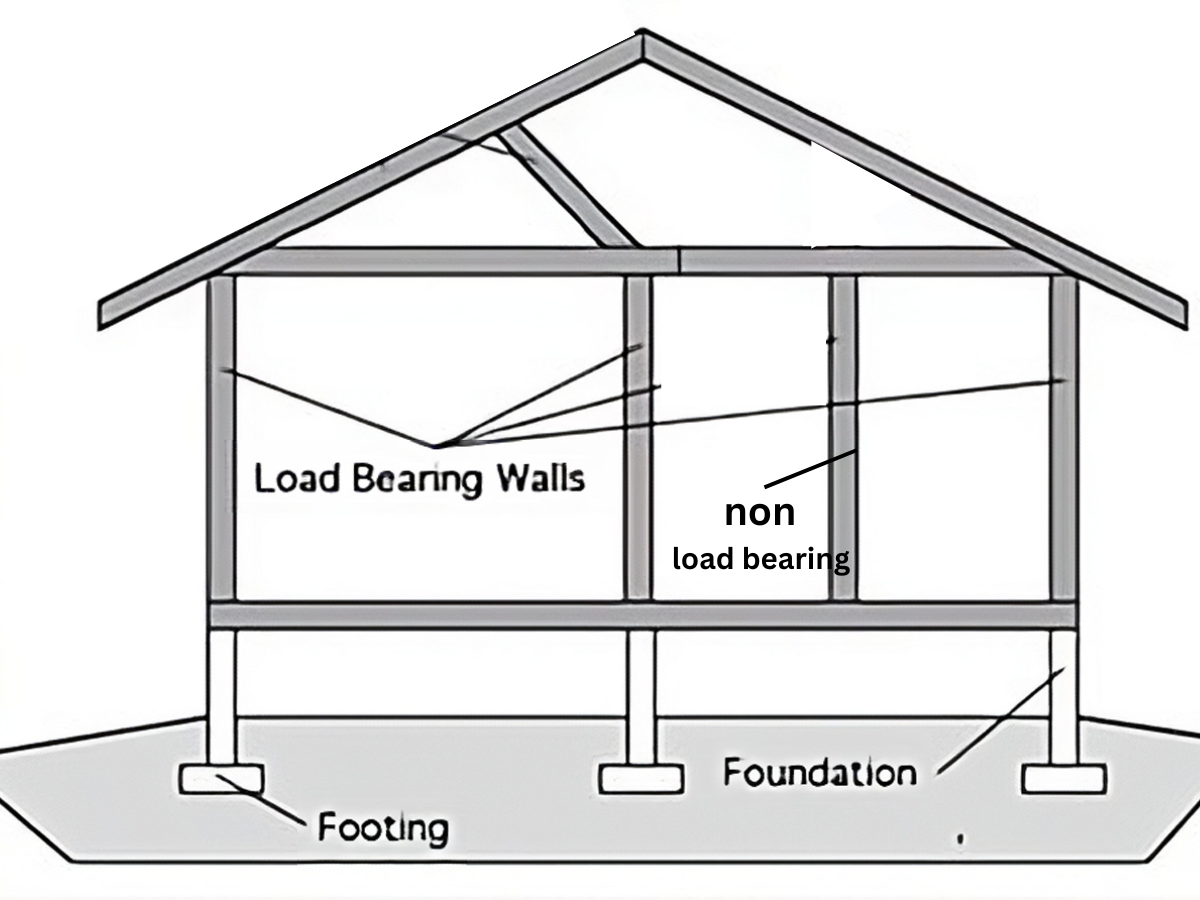What is Load-Bearing wall?
Table of Contents
ToggleDefinition: A load-bearing wall is any structural element supporting other elements or structures above it, such as the roof, floors and walls. It plays an important role in carrying the load from roof and upper stories to footings below.
Characteristics: The walls are often built of durable materials like brick, stone or concrete. They are usually thicker than non-load-bearing walls and form an important component of the structure.
Load bearing wall thickness: 230-250mm (9-10 inches) its the standard thickness.
What is Non-Load-Bearing wall?
Definition: The major function of non-load-bearing walls (or partition walls), is to divide up the different spaces within a building. They do not support any structural load of the building, other than their own weight and perhaps some additional superficial loads like covering.
Characteristics: Walls here are also lighter and thinner than load-bearing walls, often construction materials like gypsum boards, timber or metal frames. They can also be easily adjusted or changed without affecting the building’s stability.
Non-load bearing wall thickness: the standard thickness 100-115mm (4-4.5 inches). these thickness changes as per the requirement
What is the distinction between Load-bearing and Non-load Bearing Walls?
Structural Role: Walls that bear load are necessary to ensure the stability of a building, while non-load bearing walls only separate space and provide privacy.
Material and Construction: These are built with stronger materials and thicker to accommodate increased loads. On the other hand, non-load bearing walls are constructed with lighter materials and not designed to carry heavy loads.
Flexibility in Alteration: Walls that are not load bearing can be modified or done away with without compromising the stability of the building. But since changing a structural element weakens this basic stabilizing function, doing so to an actually requisite-load carrying wall must involve some thought and normally requires additional concrete work (ACW)
Types of Load-Bearing Walls
Exterior Walls: In the past, most load-bearing walls were on outside of building.
Interior Walls: Interior walls can also be load-bearing in some designs, including larger or multi-story works.
Non-Load Bearing Walls–Types
Partition Walls: Once used to divide the spaces between various rooms in a building.
Decorative Exterior Walls: If the building has an interior framework or other means of support, then some exterior walls may be non-load bearing
Related articles: Types of brick wall, Brick wall cost calculator, How to check brick quality, Precast walls, pre cast boundary walls


